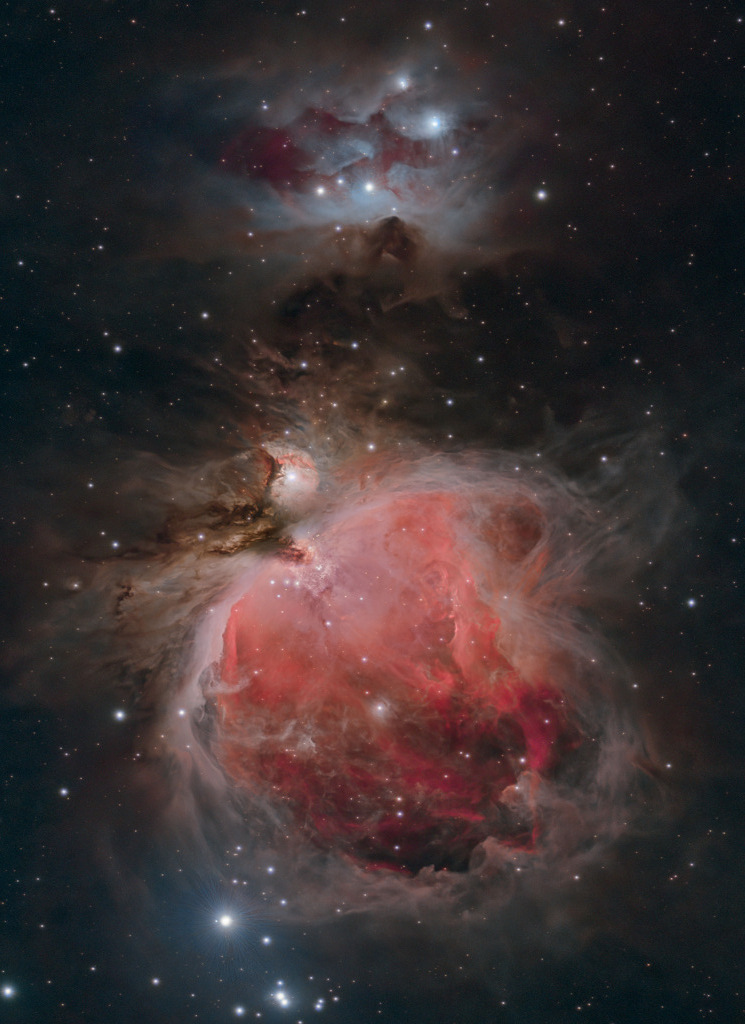2020年8月28日 The Valley of Orion Visualization Credit: NASA, ESA, F. Summers, G. Bacon, Z. Levay, J. DePasquale, L. Frattare, M. Robberto, M. Gennaro (STScI) and R. Hurt (Caltech/IPAC) Explanation: This exciting and unfamiliar view of the Orion Nebula is a visualization based on astronomical data and movie rendering techniques. Up close and personal with a famous stellar nursery normally seen from 1,500 light-years away, the digitally modeled frame transitions from a visible light representation based on Hubble data on the left to infrared data from the Spitzer Space Telescope on the right. The perspective at the center looks along a valley over a light-year wide, in the wall of the region’s giant molecular cloud. Orion’s valley ends in a cavity carved by the energetic winds…







